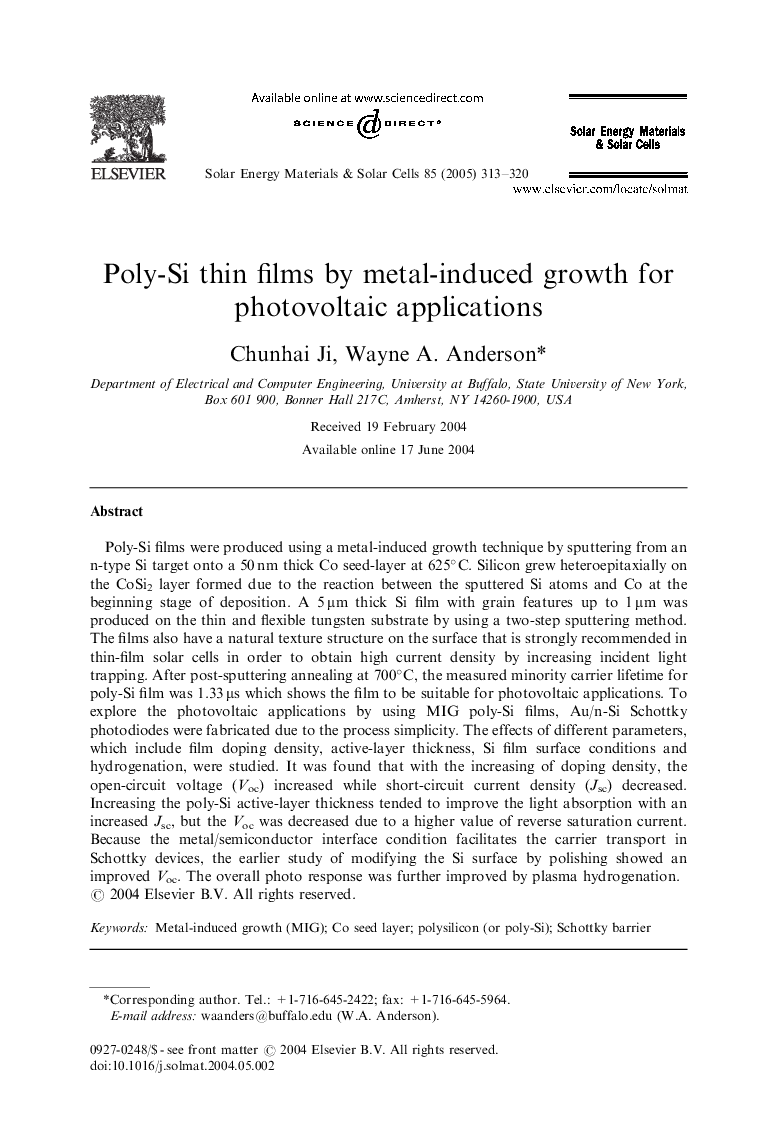| Article ID | Journal | Published Year | Pages | File Type |
|---|---|---|---|---|
| 10248854 | Solar Energy Materials and Solar Cells | 2005 | 8 Pages |
Abstract
Poly-Si films were produced using a metal-induced growth technique by sputtering from an n-type Si target onto a 50 nm thick Co seed-layer at 625°C. Silicon grew heteroepitaxially on the CoSi2 layer formed due to the reaction between the sputtered Si atoms and Co at the beginning stage of deposition. A 5 μm thick Si film with grain features up to 1 μm was produced on the thin and flexible tungsten substrate by using a two-step sputtering method. The films also have a natural texture structure on the surface that is strongly recommended in thin-film solar cells in order to obtain high current density by increasing incident light trapping. After post-sputtering annealing at 700°C, the measured minority carrier lifetime for poly-Si film was 1.33 μs which shows the film to be suitable for photovoltaic applications. To explore the photovoltaic applications by using MIG poly-Si films, Au/n-Si Schottky photodiodes were fabricated due to the process simplicity. The effects of different parameters, which include film doping density, active-layer thickness, Si film surface conditions and hydrogenation, were studied. It was found that with the increasing of doping density, the open-circuit voltage (Voc) increased while short-circuit current density (Jsc) decreased. Increasing the poly-Si active-layer thickness tended to improve the light absorption with an increased Jsc, but the Voc was decreased due to a higher value of reverse saturation current. Because the metal/semiconductor interface condition facilitates the carrier transport in Schottky devices, the earlier study of modifying the Si surface by polishing showed an improved Voc. The overall photo response was further improved by plasma hydrogenation.
Keywords
Related Topics
Physical Sciences and Engineering
Chemical Engineering
Catalysis
Authors
Chunhai Ji, Wayne A. Anderson,
